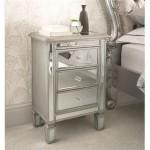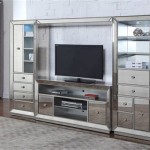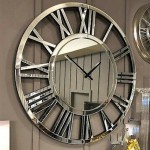Mirror Effect Spray Paint on Wood
Achieving a mirror-like finish on wood using spray paint requires careful preparation, the right products, and precise application techniques. While a perfect, flawless mirror reflection might be challenging to attain solely with spray paint, a high-gloss, reflective surface is achievable with diligent effort.
The first step involves selecting the appropriate wood. Dense hardwoods with a fine, even grain, such as maple, birch, or poplar, are ideal candidates for this project. Softwoods with open pores, like pine, are less suitable as the porous nature of the wood will impede the creation of a smooth, reflective surface. Existing finishes, such as paint or varnish, must be completely removed. Sanding the wood progressively with finer grits, from 120 to at least 320, ensures a smooth base for the paint. Any imperfections in the wood surface will be magnified by the high-gloss finish, making thorough sanding crucial.
Priming the wood is an essential step. A high-quality primer designed for smooth surfaces seals the wood, preventing the absorption of subsequent paint layers, which can lead to an uneven finish. Multiple thin coats of primer are preferable to a single thick coat, which may drip or create an uneven surface. Allow each coat of primer to dry completely according to the manufacturer's instructions before applying the next. Lightly sanding between primer coats with fine-grit sandpaper, such as 400-grit, further enhances smoothness.
Choosing the correct spray paint is paramount. Gloss or high-gloss enamel spray paints are best suited for creating a reflective effect. Specific brands offer specialized "mirror effect" spray paints, which contain metallic particles that enhance reflectivity. The color chosen also impacts the final effect. Darker colors, such as black or silver, tend to create a more mirror-like appearance than lighter colors. Regardless of color, several thin, even coats are required for a smooth, high-gloss finish. Holding the can at a consistent distance, typically 10-12 inches, and using a steady, sweeping motion prevents drips and ensures even coverage.
The application environment plays a significant role in achieving a flawless finish. A dust-free, well-ventilated area is essential. Dust particles landing on the wet paint can mar the surface and diminish the reflective effect. Adequate ventilation is crucial for both safety and proper drying. Temperature and humidity also influence drying and can affect the final finish. Ideal conditions are moderate temperatures and low humidity.
After applying the final coat of spray paint, the drying process is critical. Allowing the paint to dry completely and cure, typically for 24-48 hours or according to the manufacturer’s instructions, is essential before handling or polishing. Rushing this process can compromise the finish. Once dry, achieving a truly mirror-like finish often necessitates further polishing.
Polishing compounds, specifically designed for automotive or high-gloss finishes, can enhance the reflectivity of the painted surface. Applying the compound with a soft, lint-free cloth in circular motions and gradually reducing pressure brings out the shine. Specific polishing techniques, such as wet sanding with ultra-fine grit sandpaper followed by buffing, can further enhance the mirror effect. This process requires patience and careful execution to avoid scratching the paint.
Maintaining the mirrored finish requires careful handling and cleaning. Avoid abrasive cleaners or harsh chemicals, which can dull the surface. Cleaning with a soft, damp cloth and mild soap is usually sufficient. Protective coatings, such as clear acrylic sprays, can provide an additional layer of protection against scratches and environmental factors. Reapplying these protective coatings periodically can help preserve the mirror effect over time.
While achieving a perfect mirror reflection solely with spray paint and wood can be challenging, a highly reflective, glossy finish is within reach with diligent preparation, appropriate product selection, and precise application. Understanding the various factors that influence the outcome, from wood selection to environmental conditions, is key to producing a successful result.
Experimentation with different techniques and products can further refine the process and allow for greater control over the final appearance. Practicing on smaller test pieces before tackling larger projects is recommended to gain experience and refine techniques. The process requires patience and attention to detail, but the resulting high-gloss finish can be a rewarding accomplishment.

Ridiculously Awesome Shabby Chic Furniture Makeover Using Krylon Looking Glass Paint Do It Yourself Fun Ideas

Diy Mirror Effect How To Do Aged Tutorial Old Maple Home

Wood Table Legs In Spray Mirror Chrome Paint On

Diy Mirror Effect How To Do Aged Tutorial Old Maple Home

Updating A Sideboard With Looking Glass Spraypaint

Pottery Barn Inspired Mirror Krylon Looking Glass Spray Paint Dorsey Designs

Transformed Thrift Find Into Custom Dresser Using Krylon Looking Glass Spray Paint Metallic Gold Pa Mirrored Furniture Makeover

Mirror Effect Spray Paint Rust Oleum

Ridiculously Awesome Shabby Chic Furniture Makeover Using Krylon Looking Glass Paint Do It Yourself Fun Ideas

Testing Out A Mirror In Can Spray Paint








